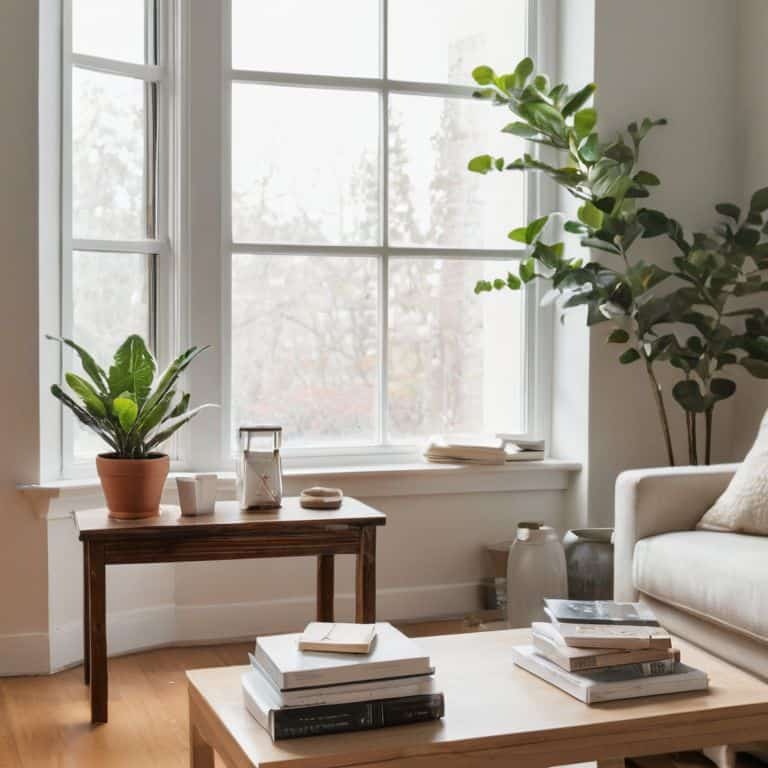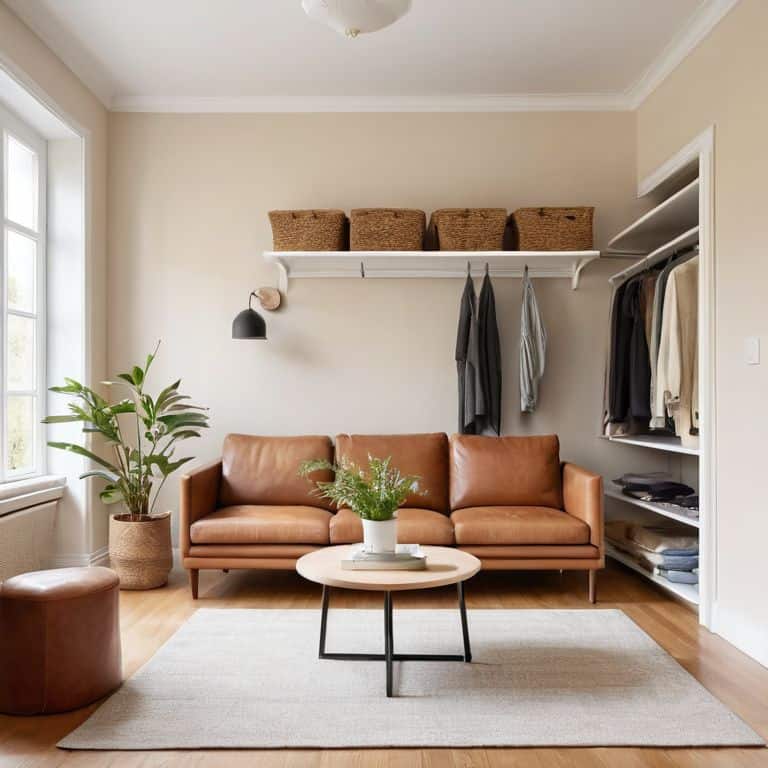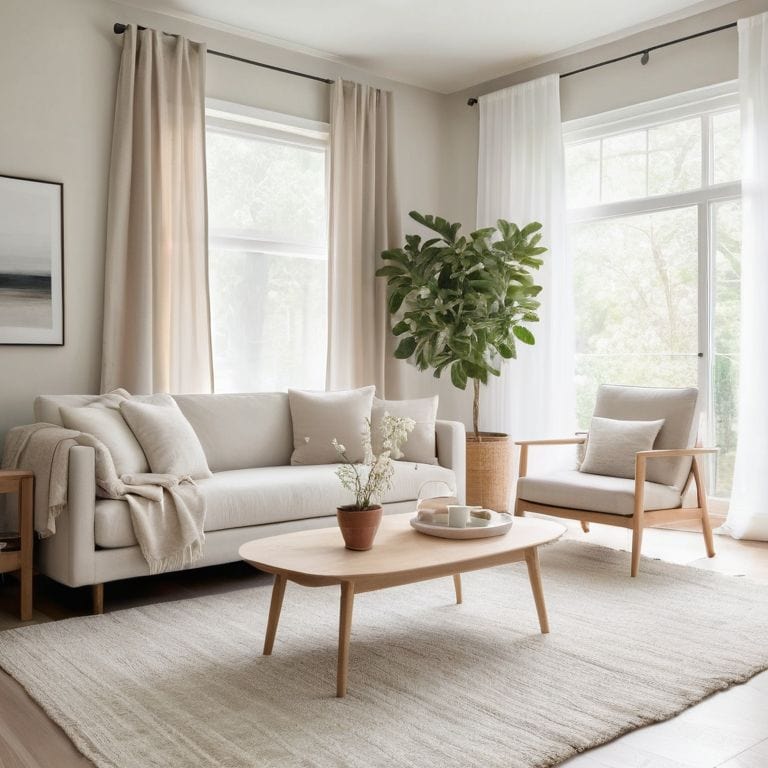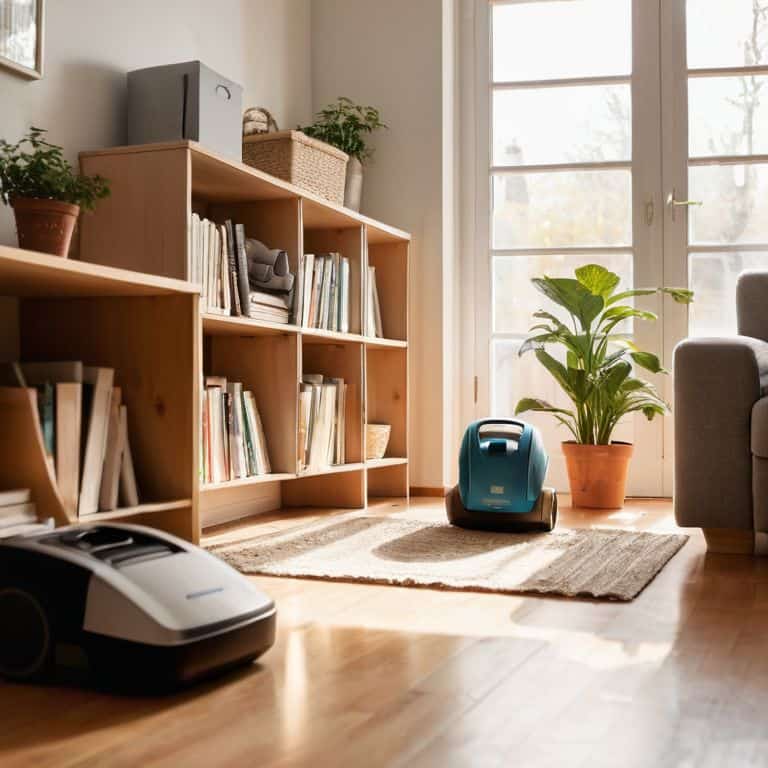I still remember the day I realized that my cluttered desk was a reflection of my cluttered mind. I was working as an HR professional, and the stress of my job was taking a toll on my well-being. As I began to _simplify my workspace_, I noticed a significant decrease in my stress levels. This experience led me to explore the concept of how to declutter your home and its impact on our mental health. I discovered that creating a peaceful living space is not just about tidying up, but about creating a sanctuary that nurtures our minds and souls.
In this article, I’ll share my personal approach to how to declutter your home, which focuses on creating a sense of calm and serenity. I’ll provide you with practical tips and strategies to help you _let go of clutter_ and create a space that feels like a big hug for your soul. You’ll learn how to identify the emotional attachment you have to certain objects, and how to make conscious decisions about what to keep and what to discard. My goal is to empower you with the knowledge and tools you need to transform your living space into a haven of peace and tranquility, and to show you that _organizing your home_ can be a therapeutic and rewarding experience.
Table of Contents
Guide Overview: What You'll Need

Total Time: 2 hours 30 minutes to several days
Estimated Cost: $0 – $100
Difficulty Level: Intermediate
Tools Required
- Box Cutter (with extra blades)
- Label Maker (optional)
- Measuring Tape (for measuring spaces)
- Trash Bags (heavy duty, 30 gallons or larger)
Supplies & Materials
- Storage Bins (various sizes, e.g., 12 inches x 12 inches x 6 inches)
- Shelving Units (custom or pre-made, e.g., 6 feet tall)
- File Organizer (for paperwork)
- Donation Boxes (sturdy, 2 feet x 2 feet x 2 feet or larger)
Step-by-Step Instructions
- 1. To begin decluttering your home, start by identifying your goals for each room. What do you want to achieve in each space? Do you want a peaceful area for reading, a functional space for cooking, or a calm zone for sleeping? Take some time to reflect on how you want to feel in each room, and what activities you want to prioritize. This will help you make decisions about what to keep and what to let go of.
- 2. Next, gather some essential supplies to make the decluttering process easier. You’ll need some sturdy boxes, a marker, and a label maker. These tools will help you sort items into categories, such as “donate,” “recycle,” and “keep.” Having a system in place will make it easier to stay focused and avoid feeling overwhelmed.
- 3. Now, let’s talk about the power of categorization. Start by grouping similar items together, such as all the books in your home, all the kitchen gadgets, or all the cleaning supplies. This will help you see what you have, and make decisions about what to keep and what to let go of. Be ruthless – if you haven’t used something in a year, it’s likely you won’t miss it.
- 4. As you start to sort through your belongings, remember to handle each item with intention. This means picking up each item, and asking yourself if it brings you joy, serves a purpose, or has sentimental value. If the answer is no, consider letting it go. This process can be emotional, but it’s an important step in creating a space that feels truly yours.
- 5. Once you’ve sorted through your belongings, it’s time to assign a home for each item. This means designating a specific place where each item will be stored, and making sure it’s easily accessible. This will help you maintain your space, and avoid clutter building up again in the future. Remember, every item should have a purpose or a place – if it doesn’t, it’s likely you don’t need it.
- 6. As you’re decluttering, don’t forget to take breaks and practice self-care. Decluttering can be physically and emotionally exhausting, so make sure to take time to rest, hydrate, and nourish your body. Take a walk, listen to some calming music, or practice some deep breathing exercises to help you stay focused and centered.
- 7. Finally, once you’ve decluttered your space, take some time to celebrate your progress. Acknowledge the hard work you’ve put in, and take pride in your newly organized space. Remember, decluttering is a process, and it’s okay to take it one step at a time. By creating a space that feels calm, peaceful, and organized, you’re taking care of your mental and emotional well-being – and that’s something to be proud of.
How to Declutter Your Home

As we dive deeper into the process of creating a peaceful living space, it’s essential to consider the concept of minimalist living tips. By embracing a more minimalist approach, we can focus on what truly adds value to our lives, rather than clinging to clutter. This mindset shift can be incredibly liberating, allowing us to let go of unnecessary items and create a sense of calm in our surroundings.
When it comes to decluttering for mental health, it’s crucial to approach the process with sensitivity and compassion. Our belongings can hold emotional significance, making it difficult to part with them. However, by acknowledging the emotional attachment and creating a safe space to process these feelings, we can begin to release the physical clutter that’s weighing us down. This, in turn, can have a profound impact on our mental well-being, allowing us to feel more grounded and at peace.
By incorporating sustainable decluttering methods into our daily routine, we can maintain a clutter-free space and reduce stress. One approach is to establish a regular practice of reviewing our belongings and donating unwanted items. This not only helps to keep our space organized but also contributes to a sense of community and social responsibility. As we cultivate this habit, we can begin to experience the profound benefits of a clutter-free life, from improved mental clarity to a deeper sense of connection with ourselves and our surroundings.
Minimalist Living for Mental Clarity
As we declutter our physical space, we’re also clearing a path for mental clarity. I’ve seen it time and time again: when our surroundings are simple and intentional, our minds follow suit. By embracing minimalist living, we’re not just getting rid of stuff – we’re creating room for what truly matters. This approach allows us to focus on the present moment, unencumbered by the weight of possessions.
By adopting a minimalist mindset, we can break free from the cycle of consumption and distraction. Our homes become a reflection of our values, rather than a collection of impulse buys. As we surround ourselves with only what brings us joy or serves a purpose, we begin to experience a sense of calm and clarity that’s hard to find in our chaotic world.
Sustainable Decluttering for Peaceful Spaces
To achieve sustainable decluttering, it’s essential to adopt a mindset shift. I encourage my clients to “interview” each item, asking if it serves a purpose or brings joy. This simple yet powerful technique helps create a connection with our belongings, making it easier to let go of what no longer resonates with us. By doing so, we’re not just decluttering our physical space, but also freeing our minds from the burden of unnecessary possessions.
As we declutter, we’re creating a peaceful space that nurtures our well-being. It’s about finding a balance between what we need and what we want, and being mindful of the energy we surround ourselves with. By embracing this approach, we can transform our homes into sanctuaries that promote calmness and clarity, allowing us to recharge and refocus on what truly matters.
From Clutter to Serenity: 5 Essential Tips to Transform Your Space
- Start with a ‘One Touch’ rule: whenever you pick up an item, try to deal with it immediately – either put it away in its designated place, toss it, or assign it to a ‘decide later’ box
- Practice the ‘Purpose or Place’ principle: for every item you’re unsure about, ask yourself if it serves a purpose or has a designated place in your home – if not, consider letting it go
- Create a ‘Maybe’ box: for items that are difficult to decide on, put them in a box and set a deadline, like 6 months, to revisit the item – if you haven’t used or thought about it by then, it’s likely safe to let it go
- Focus on one area at a time: decluttering can be overwhelming, so start with a single area, like your dresser or kitchen counter, and work your way up to larger spaces
- Schedule regular ‘Maintenance Moments’: set aside time each week to maintain your space, whether it’s 10 minutes a day or an hour on the weekend, to keep your home clutter-free and your mind clear
Key Takeaways for a More Serene Home
Embracing the concept that every object in your home should have a ‘purpose or a place’ can significantly reduce clutter and increase a sense of calm
Implementing a step-by-step decluttering process, focusing on one area at a time, can make the task less overwhelming and more manageable, leading to a more peaceful living space
By adopting minimalist living principles and sustainable decluttering practices, you can create a home that not only reflects your personal sanctuary but also contributes to your mental clarity and overall well-being
A Sanctuary Mindset
As we declutter our homes, we’re not just removing objects, we’re making space for clarity, for calm, and for the life we truly desire to live.
Nathan Reed
From Clutter to Serenity: A Journey of Transformation

As we conclude our journey on how to declutter your home, let’s take a moment to reflect on the key takeaways. We’ve explored the importance of minimalist living and its impact on mental clarity, and delved into the world of sustainable decluttering for creating peaceful spaces. By applying these principles and taking it one step at a time, you’ve begun to transform your home into a sanctuary that nurtures your mind, body, and soul. Remember, it’s not just about getting rid of clutter, but about creating a space that feels like a big hug for your soul.
As you stand in your newly decluttered home, surrounded by the serene atmosphere you’ve created, I want to leave you with a final thought: your space is a reflection of your mind. By maintaining this sense of order and calm, you’re not only organizing your physical space, but also cultivating a deeper sense of peace and clarity within yourself. So, take a deep breath, feel the sense of accomplishment, and know that you’ve taken the first steps towards a more balanced, harmonious life.
Frequently Asked Questions
How do I decide what items to keep and what to discard when everything seems to hold a memory or sentimental value?
When everything holds a memory, it’s tough to decide. I recommend “interviewing” each item, asking yourself if it brings joy or serves a purpose. If not, consider taking a photo of it to preserve the memory, then let it go. This way, you’re keeping the memory, not the clutter.
What are some strategies for maintaining a clutter-free space after the initial decluttering process is complete?
To maintain a clutter-free space, I recommend scheduling regular “home audits” to ensure everything still has a purpose or a place. Set aside time each week to tidy up and reassess your belongings, making adjustments as needed. This mindful approach will help you stay on track and keep your space serene.
Are there any specific decluttering techniques that can help with organizing digital clutter, such as computer files and email inboxes?
Let’s bring some calm to our digital lives. I recommend the “Folder System” for computer files and the “2-Minute Rule” for emails: if an email can be dealt with in less than 2 minutes, respond or delete it immediately.
